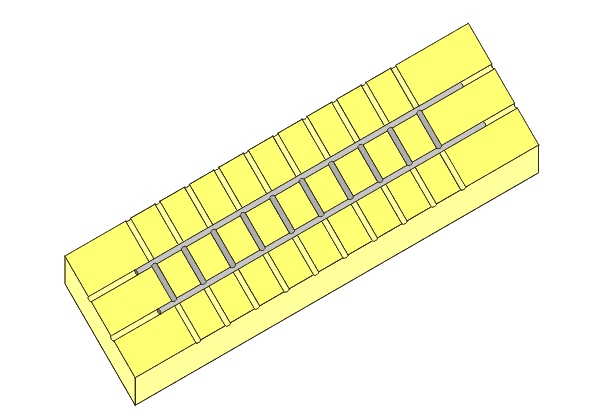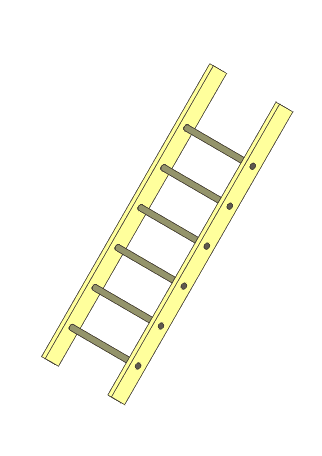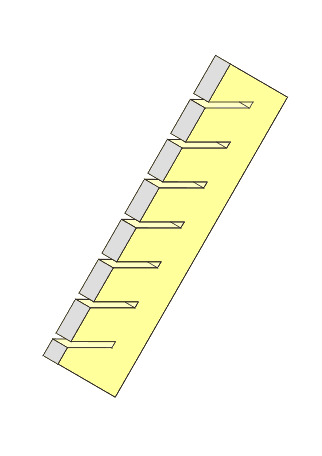There are many ways to make steps and ladders for a model ship. I have tried all sorts of ideas in the hope of being able to achieve consistent results. I have found that the best results are achieved by using the photo etching process although this is not really useful if you only require a small number of stairs or ladders. Not everyone has the resources or the will to attempt photo etching.
Where a small number of stairs or ladders are required for a particular model it is possible to build these items up from wire or plastic strip etc. An appropriate jig is important when trying to maintain consistency and each type and size of ladder or set of stairs requires its own jig.
The methods that I now use to make built up items are described below.
Ladders from wire
 To make ladders from copper or brass wire I first make a jig from MDF (Craftwood). I draw the ladder onto the block of wood and then file grooves into the wood with a needle file. Wire is cut to length and sits in the grooves of the jig. Sometimes it is necessary to use a bit of tape to stop the longer pieces from moving. The rungs of the ladder are then soldered to the sides and the whole thing is cleaned up with needle files.
To make ladders from copper or brass wire I first make a jig from MDF (Craftwood). I draw the ladder onto the block of wood and then file grooves into the wood with a needle file. Wire is cut to length and sits in the grooves of the jig. Sometimes it is necessary to use a bit of tape to stop the longer pieces from moving. The rungs of the ladder are then soldered to the sides and the whole thing is cleaned up with needle files.
Ladders from plastic
 Ladders made from plastic strip and rod are reasonably simple to construct but require accurately drilled holes to ensure a good finished product. The sides of the ladder are cut to length and then the holes are drilled for the rungs. It is important that the rungs fit snuggly into the holes. I cut the rungs a little long so that when the ladder is assembled the rungs stick out from both sides of the ladder. The whole assembly is glued together and then the rungs are trimmed off flush with the sides of the ladder.
Ladders made from plastic strip and rod are reasonably simple to construct but require accurately drilled holes to ensure a good finished product. The sides of the ladder are cut to length and then the holes are drilled for the rungs. It is important that the rungs fit snuggly into the holes. I cut the rungs a little long so that when the ladder is assembled the rungs stick out from both sides of the ladder. The whole assembly is glued together and then the rungs are trimmed off flush with the sides of the ladder.
Stairs
To make stairs I use a jig as shown above to help hold things together as glue dries. I have machined several different jigs from perspex for different sized stairs. The jig has to be a few millimeters thinner than the finished stairs so that glue does not come into contact with the jig. It is important that the treads fit snuggly into the slots of the jig to keep everything properly aligned.
